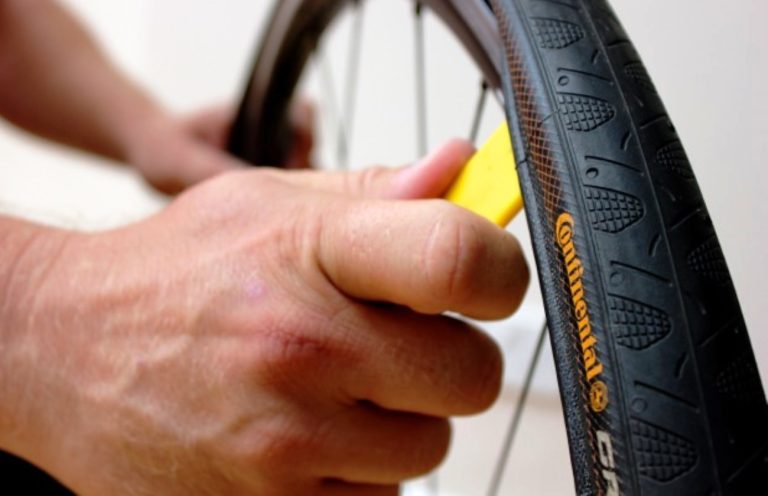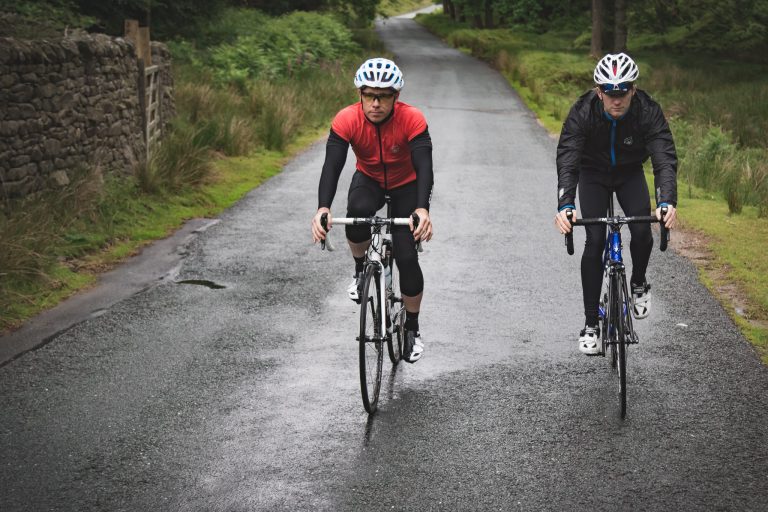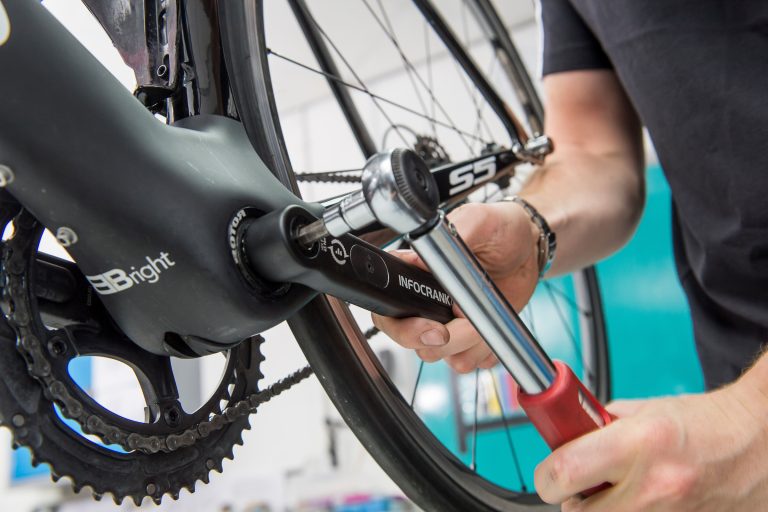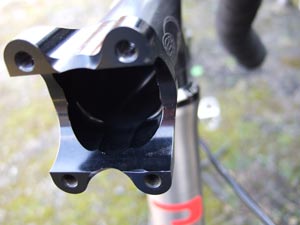 Crisp, clean edges of new stem clamp |
 Note chamfer on face plate |
While there’s nothing like a crisp, cleanly machined edge to a component, a gentle chamfer is often a better way to finish any part that clamps another. There are several such transitions on a lightweight cycle including the saddle rail cradle and seat tube where it clamps around the post and in every case it is worth ensuring that the clamped component does not butt up against a sharp edge.
The dangers of such an edge have long been recognized; it concentrates the loads experienced by the clamped part and, in doing so, increases the risk of a fatigue fracture. The saddle rail clamp is usually to blame when one of the rails fractures and the same is true of seatpost failure where it has not been caused by overtightening.
What is better? A smoothly curved transition from the unsecured part of the rail, post or, on this case, handlebar to the inside of the clamp, ensuring that loads are distributed over a wider length of component.
This is the way parts should be finished as a matter of course, but it is worth checking and, where a sharp edge is discovered, giving it the required chamfer. Doing so is easy. Here we have a fine example of USE’s excellent CNC-machined Race Stem. On inspection, the face plate can be seen to have a generous chamfer around the edge making the transition to the handlebars whereas the same edge on the body retains a cleanly machined corner under the hard anodized coating.
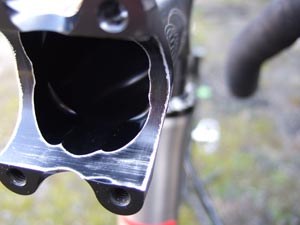 Dressed surfaces show through |
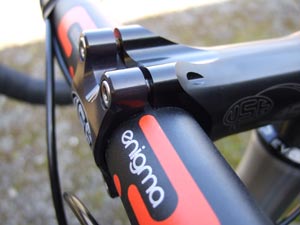 No degradation of external appearance |
Giving it a chamfer requires nothing more than a willingness to take a craft knife to the mating surface. It is lightly drawn around the edge of the clamping surface to give a slight radius to the corner; no need to take off more than the faintest shaving. Use a round or half-round file if preferred, but the knife does the job perfectly well and is less likely to be too fierce. We also removed some of the anodising from the mating surface using fine grade wet-or-dry paper, since the surface is hard and not especially grippy and the bars shown had previously slipped, and made sure we removed all traces of abrasive afterwards.
Note that the visible, external surface of the stem is left untouched, although a miniscule gap would be visible ‘under the microscope’ around the circumference of the bar. Combined with the roughened mating surface, the result is considerably enhanced clamping along with what should be greatly enhanced handlebar fatigue life and all for nothing more than five minutes’ work. The same process can be applied as necessary to other examples of such transitions including those described above.


